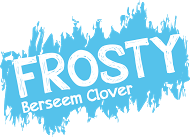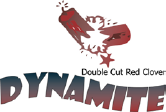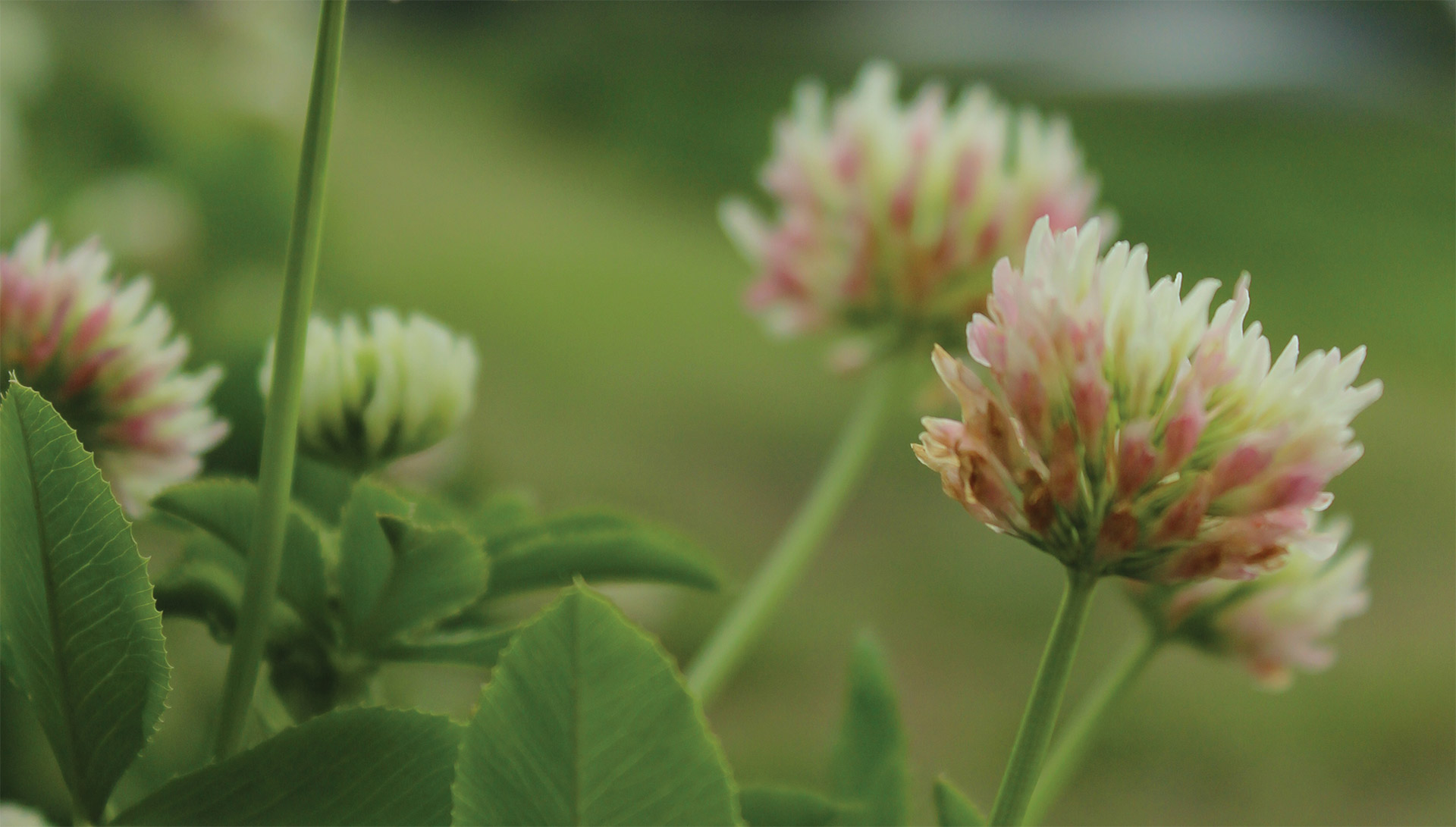
annual clovers and legumes

Frosty™ Berseem Clover
Frosty Berseem Clover is a cool season, annual legume that can be used in mixtures with other legumes and grasses in pasture or hay situations. It is a non-bloating legume that is synergistic with alfalfa for new stands or seeding into existing alfalfa stands. It can improve the quality and yield of forage and create substantial quantities of nitrogen to improve soil health and provide needed nitrogen for subsequent crops. Frosty is approximately 45 days later in maturity than crimson clover, allowing for multiple cuttings and grazing.

Kentucky Pride Crimson Clover™
Kentucky Pride Crimson Clover™ is an annual clover used mostly as a cover crop for nitrogen fixing and biomass production. Its ability to continually grow under cooler conditions allows for greater production into the fall than other clovers. Added to a grass mixture, Kentucky Pride Crimson Clover™ will provide needed biomass for grazing or hay production. Because of its shade tolerance, it can also be interseeded into standing corn to provide ground cover and weed suppression.

FIXatioN™ Balansa Clover
Fixation Balansa Clover is a cool season, annual legume that can serve as a good alternative in multiple cropping scenarios. It has shown to survive winter temperatures as low as 5 degrees Fahrenheit with yield potential as high as 5,250 lbs. in a single cutting. It aggressively produces forage in the spring through early summer months and can grow up to 3 feet high with stems up to 8 feet long. It can withstand multiple cuttings and grazing and attracts beneficial insects and pollinators. This variety should be dormant seeded in northern climates to achieve maximum yield advantages
Mammoth Red Clover
Mammoth Red Clover is a biennial legume, usually lasting 1-2 years. It grows taller than medium red clover and is 10-14 days later in maturity. It produces one cutting of hay per season due to slow plant recovery after cutting. Forage quality is lower than medium red clover with its primary use being green manure or as an annual cover crop. Mammoth red clover tends to grow better on poorer soils and higher pH soils than medium red clover.
Hairy Vetch
Hairy Vetch is used extensively in the United States primarily as a cover crop and forage crop. It is used as an annual in the northern regions of the country and as a winter annual as you move south. When spring planted with grains it makes an excellent livestock feed. It is also a good nitrogen fixer and is used in mixtures for soil health improvement. Care must be taken as it can overwinter even in northern climates when snow cover is sufficient. Often, a large amount of hard seed is present that may cause problems for future cash crops.
COMMON vetch
Common Vetch is an annual legume used mostly in cover crop mixes as a nitrogen scavenger and for green manure. It can also be used in pasture, silage and hay settings as it produces a large amount of dry matter per acre. It is less winter hardy than hairy vetch and has less hard seed making it more appealing in cover crop mixes and planted as a monoculture. Best adapted to well drained, fertile soils and tolerates soil pH's of 5.5-8.2.
CHICKLING VETCH
Chickling Vetch is a high nitrogen producing legume used mostly in cover crop mixes for soil health and nitrogen fixing. It is frost and drought tolerant and performs best on well drained soils. Highly nutritious forage with a high protein value that can be used for haying, grazing or as a green manure.
perennial clovers and legumes

Dynamite Medium Red Clover™
Dynamite Medium Red Clover™ is a biennial legume with excellent winter hardiness, lasting 3-4 years under good management practices. It reaches a height of 12 to 18 inches and is generally used in hay or pasture settings. It has rapid spring growth to allow for multiple cuttings and grazing and produces excellent forage quality with above average yields. This variety is moderately resistant to northern anthracnose and powdery mildew and has some shade tolerance allowing for use as a cover crop in corn.
Yellow Blossom SweetClover
Yellow Blossom Sweetclover is a biennial sweetclover long known for its efficiency as a soil builder. It's vigorous tap root penetrates heavy soils to improve soil drainage and it is an excellent nutrient scavenger. It produces abundant biomass and is a great N-source when used as a green-manure crop. Yellow Blossom Sweetclover is unpalatable to some livestock due to coarse stem and bitter taste and it not recommend for livestock feed and forage.
White Blossom SweetClover
White Blossom Sweetclover is very similar to yellow blossom sweetclover and can be used in similar ways. It is also quite popular with the bee industry as a pollinator to produce clover honey. White blossom sweetclover blooms 10-14 days later than yellow blossom sweetclover and is sometimes used in mixtures with yellow blossom sweetclover to extend the flowering period for beneficial pollinators.
Alsike Clover
Alsike Clover is an introduced, short-lived perennial legume that reaches heights up to 15-30 inches. It usually produces only one cut per year and is typically planted with grasses, most commonly timothy, orchardgrass, and bromegrass. It prefers wet soils and has tolerance to higher acidic and saline soils.
Ladino White Clover
Ladino White Clover is a giant white perennial clover growing to 10-14 inches tall in a prostate growth habit. Ladino recovers quickly from grazing or clipping as new leaf and flower buds are continually developing on the running stems. It does best on medium to heavy soils with good moisture however it tolerates poor conditions better than most other clovers. It is commonly grown in mixtures with grasses and ranks high in feed value and palatability and is used extensively in wildlife mixtures and in cover crop soil improvement mixtures.
White Dutch Clover
White Dutch Clover is used mainly in lawns for ornamental purposes, but can be used as groundcover, for erosion control, as a pollinator or in pasture mixes. It is shallow rooted and spreads by creeping stems while growing to 3-6 inches tall. It grows best under cool, fertile, moist conditions, but is adaptable to acidic and poorly drained soils where alfalfa cannot survive.
STRAWBERRY Clover
Strawberry Clover is a medium growing (10-14 inches) perennial legume with similar growth habits to white clover. It is a deep-rooted species and can be used as a groundcover, in pasture mixes for hay and silage and as a nitrogen fixer. It is one of the best clovers to tolerate waterlogged, saline and alkaline environments and can withstand flooding for extended periods.
Medium Red Clover
Common Medium Red Clover is a biennial legume, usually lasting 2-3 years, with growth to 12 to 15 inches in height expected. It is well suited in short rotations and generally used in a hay or pasture setting. It has rapid spring growth to allow for multiple cuttings and grazing and produces excellent forage quality with average yields.
SUBTERRANEAN Clover
Subterranean Clover, better known as "sub-clover", is a low-growing annual that produces dense cover because of its low growth pattern and extensive stolons and leaves. This also makes it an excellent weed suppresser, even better than vetches. It produces best under mild, wet conditions on heavier soils, but will tolerant lower fertility soils and shade.
Sainfoin
Sainfoin is an introduced, non-bloating, perennial legume that should be used in a hay or pasture setting. High protein, high palatability and its drought tolerance make it a good choice for range improvement for livestock or wildlife. Typically grows taller and greens up earlier in the spring than alfalfa, and stays green. Sainfoin produces large amounts of nectar and is highly attractive to honey bees and is readily eaten by elk, deer and sage grouse.
Birdsfoot Trefoil
Birdsfoot Trefoil is a long lived, deep rooted, perennial legume similar to alfalfa and red clover. It is very winter hardy and drought tolerant with less bloat danger than alfalfa or most clovers when pastured. It is highly palatable and has feed value equal to alfalfa. It is slow to establish but is extremely persistent once established. Seed should be inoculated and planted early into a firm seedbed.
CICER MILKVETCH
Cicer Milkvetch is a long-lived non-bloating perennial legume with vigorous creeping roots and rhizomes. Its primary use is in hay or pasture setting for forage production. Yields and forage quality are similar or better compared to alfalfa and other legumes and it is palatable to most livestock and wildlife. Recovery from grazing is rapid but recovery from cutting is slow.
Agassiz Seed and Supply carries additional clover and legume species, including:
- Phacelia
- Annual White Sweetclover
- Q Red Clover
- Crown Vetch
- Korean Lespedeza
- Persian Clover



